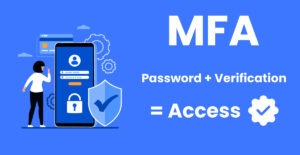
In today’s digital world, cybercriminals are constantly finding new ways to exploit individuals and businesses. One of the most alarming tactics is extortion emails, which aim to manipulate recipients into paying a ransom. This post will explore the different types of extortion emails, how to recognize them, and what to do if you receive one. We’ll also discuss the growing threat of extortionware.
1. Sextortion Emails
Sextortion emails are among the most common forms of blackmail. In these emails, the attacker claims to have access to compromising photos or videos of the victim, often alleging that these were captured through a hacked webcam. To make the threat more convincing, cybercriminals might include personal details, such as an old password, in the email. Their goal is to pressure the recipient into paying a ransom, usually via cryptocurrency.
- How to recognize sextortion emails:
- The email references webcam access or hacked accounts.
- It includes personal details like passwords to increase credibility.
- The sender demands payment, often in Bitcoin or other cryptocurrency.
- What to do:
- Do not engage with or pay the sender.
- Change any compromised passwords.
- Report the email to your email provider or a cybersecurity expert.
2. Fake Hitman or Threat Emails
Another intimidating form of extortion involves a criminal posing as a hitman. In these emails, the sender claims to have been hired to harm the recipient but offers to call off the attack in exchange for a payment. These emails aim to instill fear and push victims into complying.
- How to recognize these threats:
- The email threatens harm or violence.
- The sender demands payment to prevent the supposed attack.
- What to do:
- Report the threat to local law enforcement.
- Do not respond or pay the ransom.
3. Ransomware Threats and Extortionware
Ransomware threats have evolved into what is now known as extortionware. In these scenarios, the cybercriminal threatens to encrypt your files or leak sensitive data unless you pay a ransom. While ransomware locks up your files, extortionware takes this a step further by threatening to release your data publicly, increasing the pressure on victims to pay up.
- How to recognize extortionware:
- The email mentions encrypting files or leaking data.
- It demands payment to prevent the release of sensitive information.
- What to do:
- Ensure your systems are backed up regularly and secured with up-to-date antivirus software.
- Ignore the demand and work with cybersecurity experts to prevent further damage.
4. Data Breach Extortion Emails
In this form of extortion, the attacker claims to have breached a business’s database or personal accounts. They threaten to leak sensitive information unless a ransom is paid. Businesses are common targets of this attack due to the potential damage a data leak could cause to their reputation and customer trust.
- How to recognize data breach extortion emails:
- The email refers to specific sensitive information, like client details or proprietary data.
- There is a threat to publicly release this information if a ransom isn’t paid.
- What to do:
- Verify whether a breach has occurred.
- Involve cybersecurity experts to assess and mitigate any real risks.
- Report the incident to relevant authorities and regulators.
5. Phishing-Linked Extortion Emails
Sometimes, extortion emails are a follow-up to a phishing attack. In these cases, the recipient might have unknowingly provided login credentials or clicked on a malicious link in an earlier phishing attempt. After the attacker gains access to sensitive information, they send a follow-up email threatening to misuse or leak the stolen data unless a ransom is paid.
- How to recognize phishing-linked extortion emails:
- The initial email may appear as a legitimate request for personal information.
- The follow-up email contains threats to use or release sensitive data.
- What to do:
- Be cautious about clicking links or downloading attachments from unknown sources.
- https://baychester.com/keeper-yubikey-mfa-implementation/Use two-factor authentication (2FA) to secure your accounts.
- Change passwords immediately and alert your IT team.
6. Business Email Compromise (BEC) Extortion
In BEC extortion attempts, cybercriminals impersonate high-level executives or business partners. They request sensitive information or ask for urgent wire transfers. After gaining access to business accounts, they may threaten to expose the breach unless a ransom is paid.
- How to recognize BEC extortion emails:
- Emails appear to come from executives or partners, requesting confidential information.
- There is an unusual sense of urgency, particularly in financial transfer requests.
- What to do:
- Verify all requests for sensitive information by contacting the sender through another communication method.
- Implement email security measures such as filtering and multi-factor authentication (MFA).
7. Legal Threat Extortion Emails
In legal threat extortion emails, the sender claims the recipient is facing legal action or owes a fine. They threaten legal consequences unless the recipient pays immediately. This tactic preys on the fear of legal trouble and pressures victims to act quickly.
- How to recognize legal threat extortion emails:
- The email mentions lawsuits, fines, or legal actions.
- The sender demands immediate payment to avoid further trouble.
- What to do:
- Ignore and report the email.
- If in doubt, consult a legal professional to verify any real legal matters.
Protecting Yourself from Extortion Emails and Extortionware
- Keep Software Updated: Regularly update your operating system, antivirus, and other key software to prevent malware infections.
- Use Strong, Unique Passwords: Password managers can help you create and store strong passwords that are harder to compromise.
- Enable Two-Factor Authentication (2FA): Add an extra layer of protection to your accounts to make it more difficult for cybercriminals to access them.
- Back Up Your Data Regularly: Frequent backups can protect you against ransomware and extortionware by allowing you to restore lost or encrypted files without paying the ransom.
- Stay Informed: Awareness of the latest cyber threats, including how to recognize extortion emails, is key to protecting yourself and your business.
Conclusion
Recognizing extortion emails is critical in avoiding falling victim to cybercrime. Whether it’s a threat of leaking data, spreading malicious software like extortionware, or leveraging fear tactics to demand payment, these emails can cause real damage. However, staying calm, acting cautiously, and employing proper cybersecurity practices can help protect you from these types of attacks.
By keeping your systems secure and staying vigilant, you can effectively defend against the rising threat of extortionware and other email-based scams.


